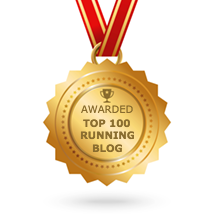VIP Threatment for Knee: Iliotibial Band Syndrome (ITBS)
 |
| Chien Chi Tow (拳器道) People's Park Center |
This knee issue has been troubling me for months, and I never really got down to investigate the root of the problem. I was running on and off during the past few months and as my knee slowly healed, I managed to increase my distance from a paltry 1 km to 4km before I feel any pain. 2 weeks ago, as I was exploring the newly launched Sports Hub, I felt a sharp pain and the pain persisted for the next few days. At that point of time, I realize that I need to seek help.
I started asking my friends for advice to see if any of them have similar experience and what kind of treatment did they seek. One of my friend had a similar experience with me and he told me that I have ITBS.
ITBS is the short form for Iliotibial Band Syndrome
According in to Wikipeida:
Iliotibial band syndrome is one of the leading causes of lateral knee pain in runners. The iliotibial band is a thick band of fascia on the lateral aspect of the knee, extending from the outside of the pelvis, over the hip and knee, and inserting just below the knee. The band is crucial to stabilizing the knee during running, as it moves from behind the femur to the front of the femur during activity. The continual rubbing of the band over the lateral femoral epicondyle, combined with the repeated flexion and extension of the knee during running may cause the area to become inflamed.
ITBS symptoms range from a stinging sensation just above the knee joint, to swelling or thickening of the tissue in the area where the band moves over the femur. The stinging sensation just above the knee joint is felt on the outside of the knee or along the entire length of the iliotibial band. Pain may not occur immediately during activity, but may intensify over time. Pain is most commonly felt when the foot strikes the ground, and pain might persist after activity. Pain may also be present above and below the knee, where the ITB attaches to the tibia.
My friend advised me to go for treatment using a mixture of Eastern and Western medicine.
While I waited for my appointment to see a specialist, I went to seek treatment at a well known Eastern Orthopedic Center, Chien Chi Tow (拳器道) at People's Park Center. After describing the symptoms to the therapist, he explained to me the structure of the knee and accurately diagnosed the tendon that is injured. I was advised to undergo a muscle and tendon rub, acupuncture (针灸) and Herbal Heat Treatment (热敷)
 |
| Acupuncture (针灸) |
 |
| Herbal Heat Treatment (热敷) |
Meanwhile, I have to look for a new exercise regime that doesn't
I was advised to rest my knee for 3 months and switch from running to other non impact exercise such as swimming.
Swimming! It's so boring!
Oh well, better rest up and get well before my Spain, Portugal trip 3 months later.
Meanwhile, I will have to blog on other running and fitness related materials while I wait for my knee to heal.









Excessive training should be limited as well as resting for periods of time. Incorporating low-impact cross-training activities will also help.
ReplyDeleteIliotibial Band Syndrome